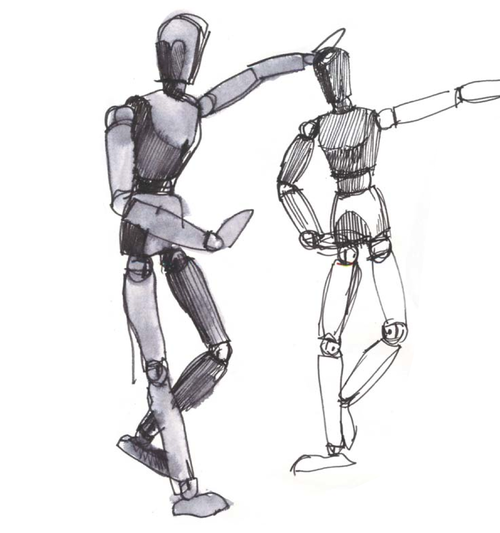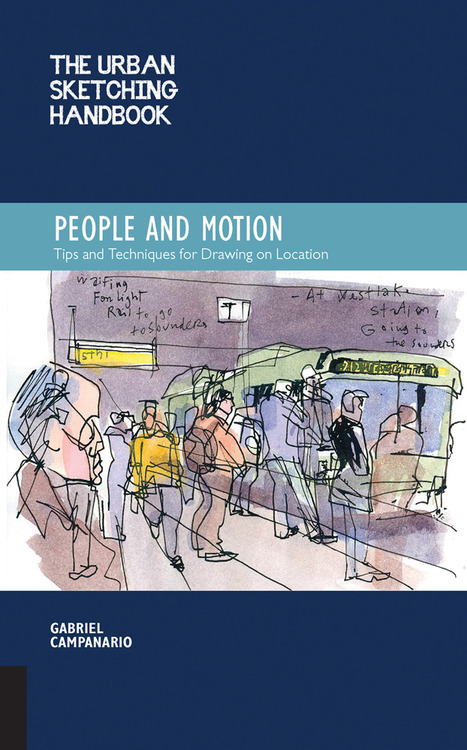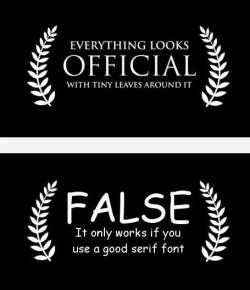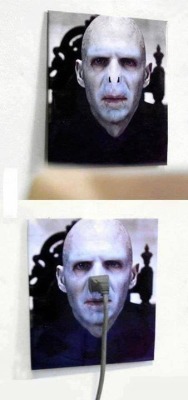People Proportions
Learning to draw is an important part of being an urban sketcher. Cities are teeming with all different types of people! While this variety can make sketching people fun, it can also be a very frustrating feat. It is essential to understand anatomy and of course, proportions. The Urban Sketching Handbook: People and Motion teaches you the basics of human proportions.

Here’s something that makes drawing people easier than you think: Humans are very proportionate. We come in all shapes and sizes—short and tall, skinny and wide—but we still follow a standard template: Our height equals about 7.5 or 8 times the height of our head. The bottom of the pelvis marks the body’s half point.
When you get the basics of human proportion down, you are well equipped to include people in your urban sketches any time. In other words, once you can draw one proportionate person, you can draw them all. On the contrary, make the head of a person too big or an arm too long and you’ll be making sketches of aliens, or caricatures, instead of believable drawings.

Practice with a wooden mannequin. Sketching people out and about can feel like shooting a moving target, at first. Start with some home practice. Use these bare-bones wooden contraptions to get a grasp of the proportion and mechanics of the human body. They are available at most art supply stores.
 Practice drawing people you know.
Practice drawing people you know.
Taking figure drawing lessons will undoubtedly help you develop your understanding of human anatomy and proportion, but don’t overlook the opportunities to sketch the many willing models who surround us every day. My family, sketcher friends, and even some coworkers often appear in my sketchbooks.

Study head proportions.
Heads and faces are fascinating subjects. Whether you are sketching during your commute or at the coffee shop, interesting faces will crop up and you’ll want to draw them. Though each face is unique, certain proportions apply across the board. I’ve studied Gary Faigin’s The Artist’s Complete Guide to Facial Expression to improve my skills in this area.

Think bones.
The face can be divided into three zones: chin to bottom of the nose (1); bottom of the nose to eyebrows (2); and eyebrows to top of forehead (3). A head’s middle point (4) lies right below the eyeballs.

Look for urban models.
Public transportation offers a great setting to put your people drawing skills to the test. Start with commuters who are unlikely to notice you—those who are reading or dozing off after a hard day’s work.
—

Notes
kataco-me liked this
ntgnst liked this
idlehandsproductions liked this
rockpaperink-blog posted this










